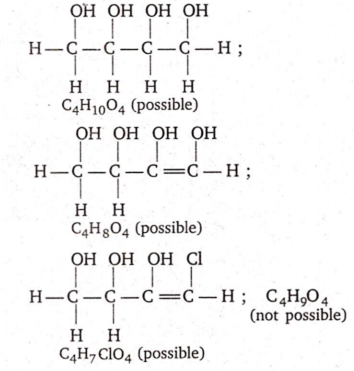 Multiple Choice Questions
Multiple Choice QuestionsA compound is formed by substitution of two chlorine for two hydrogens in propane. The number of possible isomeric compounds is
4
3
2
5
Which one of the following formulae does not represent an organic compound ?
C4H10O4
C4H6O4
C4H7ClO4
C4H9O4
D.
C4H9O4
C4H10O4 is CnH2n+2 type compound, ie with unsaturation factor 0, C4H8O4 and C4H7ClO4 are CnH2n (unsaturated) type compound, ie, have unsaturation factor 1 while C4H9O4 is CnH2n+1 type compound with unsaturation factor 0.5. Hence, C4H9O4 does not represent an organic compound.

The following graph shows how t1/2 (half-life) of a reactant, R changes with the initial reactant concentration a0. The order of the reaction will be
0
1
2
3
The time taken for 10% completion of a first order reaction is 20 min. Then, for 19% completion, the reaction will take
40 min
60 min
30 min
50 min
The half-life of a radioactive element is 10 h. How much will be left after 4 h in 1 g atom sample?
45.6 x 1023 atom
4.56 x 1023 atom
4.56 x 1021 atom
4.56 1020 atom
Of the following acids the one which has the capability to form complex compound and also possesses oxidising and reducing properties is
HNO3
HNO2
HCOOH
HCN
Atoms in a P4 molecule of white phosphorus are arranged regularly in the following way
at the corners of a cube
at the corners of an octahedron
at the corners of a tetrahedron
at the centre and corners of a tetrahedron
